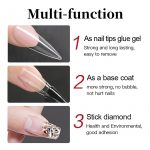Last Updated on 1 year by Francis
https://www.youtube.com/watch?v=pAkaHy-LZ7U
Amethyst is a popular gemstone known for its violet hue and association with clarity and spiritual energy. With its increasing demand in the market, many people are left wondering if the amethyst they are buying is real or fake. In this article, we will provide you with some tips and tricks on how to tell if an amethyst is real or not.
Contents
The Mystical Stone of Amethyst
Amethyst is a stunning purple stone that has been used for centuries for its healing properties. According to ancient Greek mythology, Amethyst is said to have been created by the goddess Diana when she transformed a young woman into a white stone to protect her from the wrath of Bacchus. The stone’s purple hue comes from the presence of iron and manganese within the crystal. Amethyst is believed to have many spiritual and emotional benefits, including promoting calmness, clarity, and inner peace.
The Importance of Authenticity
When it comes to purchasing amethyst, it’s essential to ensure that you’re buying an authentic stone. There are many fake stones on the market, and it can be challenging to tell the difference between real and fake amethyst. Fake stones can be made from glass, plastic, or other materials that mimic the appearance of amethyst. Purchasing a fake stone can be disappointing and can also prevent you from experiencing the true spiritual and emotional benefits of the crystal.
One key takeaway from this text is that when purchasing amethyst, it’s essential to ensure that you’re buying an authentic stone in order to experience its true spiritual and emotional benefits. There are several methods to identify real amethyst, including visual inspection, weight and density, thermal conductivity, UV light test, and scratch test.
Misconception Alert: Can’t Tell the Difference
One common misconception is that it’s impossible to tell the difference between real and fake amethyst. While it can be challenging to identify a fake stone, there are several methods you can use to determine if your amethyst is authentic.
Methods to Identify Real Amethyst
Visual Inspection
One of the easiest ways to identify real amethyst is through visual inspection. Real amethyst will have a deep, rich purple color with variations in shade throughout the stone. The crystal should also have a natural, unpolished appearance with no visible bubbles or scratches. If the stone is too perfect or has a uniform color, it’s likely a fake.
Weight and Density
Real amethyst will have a weight and density that feels natural and substantial. When you hold a real amethyst stone, it should feel cool to the touch and heavier than a fake stone made from glass or plastic. A fake stone will often feel light and may even have a hollow sound when tapped.
Thermal Conductivity
Another method to determine if your amethyst is real is through thermal conductivity. Real amethyst will feel cool to the touch, even in warm environments, due to its thermal conductivity properties. A fake stone made from glass or plastic will often feel warmer to the touch.
UV Light Test
If you have access to a UV light, another way to identify real amethyst is through a UV light test. Real amethyst will have a natural fluorescence under UV light, which can help distinguish it from fake stones. A fake stone will often have a uniform color under UV light, while real amethyst will have variations in color.
Scratch Test
Another method to determine if your amethyst is real is through a scratch test. Real amethyst is a relatively hard mineral and will not scratch easily. You can perform a scratch test by using a piece of glass or a knife to try and scratch the surface of the stone. If the stone is scratched easily, it’s likely a fake.
FAQs: Amethyst How to Tell if Real
What is amethyst?
Amethyst is a purple variety of quartz mineral, visible to the naked eye. It is a popular gemstone and has been used in jewelry for centuries. The name “amethyst” comes from the Greek “amethystos,” meaning “not drunk,” as it was believed to prevent intoxication.
How can I tell if amethyst is real?
There are a few methods to determine if amethyst is real or not. Firstly, consider the color. Natural amethyst typically ranges from a pale lavender to a deep purple hue. If the color appears too vibrant or has a blue or reddish tint, it is likely synthetic. You can also examine the surface of the crystal for natural inclusions, which are imperfections within the crystal formed during its growth process. Additionally, real amethyst is heavy and will feel denser than synthetic imitations.
Can amethyst be heat-treated to enhance its color?
Yes, amethyst can be heat-treated to enhance its color. The process involves exposing the gemstone to high temperatures, which alters its color from a pale lavender to a more vibrant purple. Heat-treated amethyst is still considered real, but it is important to note that it may be less valuable than natural, untreated amethyst.
How can I ensure the authenticity of an amethyst purchased online?
It can be challenging to determine the authenticity of an amethyst purchased online, but there are a few things you can do to minimize the risk. One option is to purchase from a reputable seller with a good track record of selling naturally occurring gemstones. When examining the product listing, look for information about the source of the amethyst and any details about its quality or certifications. Additionally, try to find customer reviews or ratings of the seller or website to gauge their credibility.
Why is it important to ensure the authenticity of amethyst?
Ensuring the authenticity of amethyst is important because synthetic or imitation gemstones are often sold at a lower price point than naturally occurring gemstones. While synthetic amethyst may look similar to the real thing, its value and properties will be significantly different. Additionally, if you are purchasing amethyst as an investment or for a collection, it is crucial that you are aware of its true value and properties.







